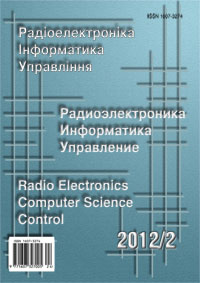COMPARISON OF DESIGN SOFTWARE BASED ON MODELING OF MICROSTRIP FILTERS WITH SLOTTED SCREEN
DOI:
https://doi.org/10.15588/1607-3274-2012-2-10Keywords:
microstrip filter, slotted ground plane, Microwave Office, HFSS, EM-simulation.Abstract
A comparative analysis of design programs Microwave Office and HFSS on examples of microstrip filters with slots in the ground plane was performed. The results of numerical modeling of the filters in comparison with experimental data are presented. Microwave Office’s advantages are an intuitive user-friendly interface and ease of development, the availability of extensive elements library which simplifies and speeds up the design process. However Microwave Office has some disadvantages: using of rectangular grid for drawing the object and time of the analysis models. The main advantages of HFSS are a high speed calculation with sufficient accuracy of the results in comparison with experiment. Using tetrahedral shape cells allows to more accurately describe the three-dimensional structures. The disadvantages of this CAD are difficulty of development and complexity of specifying ports. Thus, the system Microwave Office is better to use during the initial modeling. For more accurate results, if data about ports’ dimension are given, system HFSS is preferable.Downloads
Published
How to Cite
Issue
Section
License
Copyright (c) 2014 N.I. Furmanova, A.Y. Farafonov, S.N. Romanenko, E.N. Shynkarenko, M.V. Mishchenko

This work is licensed under a Creative Commons Attribution-ShareAlike 4.0 International License.
Creative Commons Licensing Notifications in the Copyright Notices
The journal allows the authors to hold the copyright without restrictions and to retain publishing rights without restrictions.
The journal allows readers to read, download, copy, distribute, print, search, or link to the full texts of its articles.
The journal allows to reuse and remixing of its content, in accordance with a Creative Commons license СС BY -SA.
Authors who publish with this journal agree to the following terms:
-
Authors retain copyright and grant the journal right of first publication with the work simultaneously licensed under a Creative Commons Attribution License CC BY-SA that allows others to share the work with an acknowledgement of the work's authorship and initial publication in this journal.
-
Authors are able to enter into separate, additional contractual arrangements for the non-exclusive distribution of the journal's published version of the work (e.g., post it to an institutional repository or publish it in a book), with an acknowledgement of its initial publication in this journal.
-
Authors are permitted and encouraged to post their work online (e.g., in institutional repositories or on their website) as it can lead to productive exchanges, as well as earlier and greater citation of published work.






